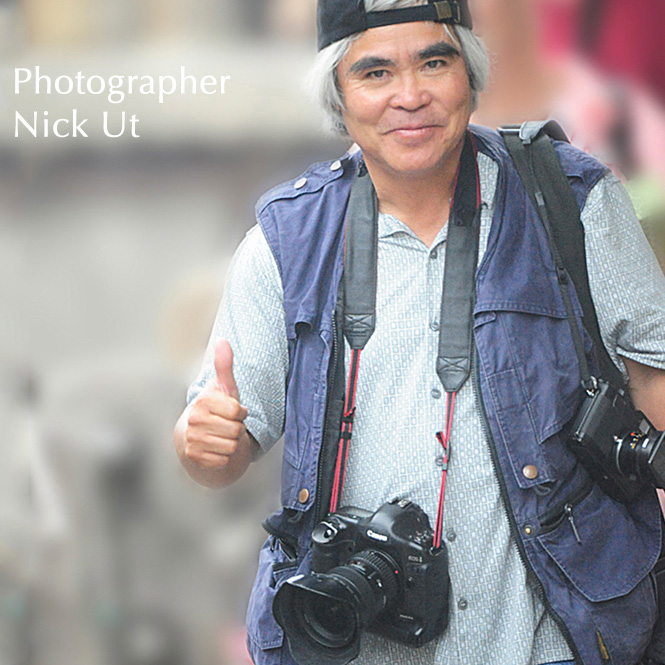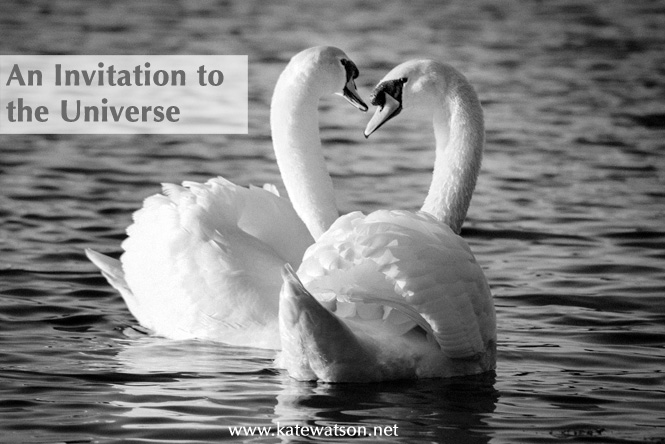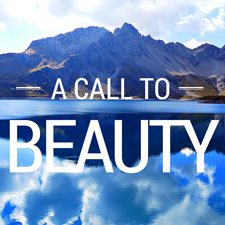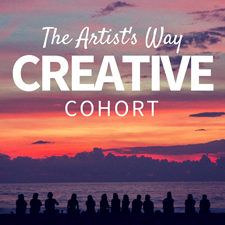
I’m trying something a bit different today. I’ve seen a lot of inspiring articles and videos around the Internet lately and I want to share some with you:
First up is Cory Richards and his journey from homeless teen to National Geographic photographer. In the video below, Cory talks about strength, resilience, and adventure or, in his own words, “what it means to hurt, what it means to triumph, and what it means to be human”:
A Tribute to Discomfort: Cory Richards from Blue Chalk on Vimeo.
For more from Cory, check out his official website and National Geographic profile.
Next I’d like to share Smita Malhotra, M.D.’s 5 Characteristics of Incredibly Resilient People. The pediatrician/writer/photographer tells the story of her aunt’s cancer diagnosis and how her positivity through the process left her strengthened by the experience.
Which reminds me of a blog I recently discovered: The Naked Gardiner. Founder Kathy Gardiner, who I met in Thailand in 2011, has battled melanoma for many years. Her blog is not just about cancer, however, but about her desire “to live clean, toxic-free and abundantly.” She shares “my love for life, the foods that I enjoy and the people, things and objects that inspire me. It’s a blog about self discovery, reinvention and gratitude.”
Finally, I’d like to share a beautiful reminder that it’s never too late to live our best lives and do our best work: How to Love the Age You Are, an article from Oprah’s June issue.
I turn 37 this year and, when you’re around teens as often as I am, that can seem old. The kids will tell you that it’s old anyway. I sometimes feel like I should have accomplished more by this point in my life but, as the writers below prove, it’s never too late. Some of my favorites:
- The Joy of 35… Aimee Morgan, a programmer from Mountain View, Calif., proves that it is never too late to learn a new skill, even a challenging one.
- The Joy of 36… Writer Penny Wrenn on why you should throw an incredible party for yourself, even if you’re not getting married, buying a house, or starting a new job.
- “The Joy of 50… Your Creativity Is Blooming. On average, painters produce their greatest work just before the two-thirds mark of their lives, according to a recent study. The typical American woman lives to 81, so your early 50s are the perfect time to get working on your own masterpiece.”
- The Joy of 59…Genevie Kocourek, MD, from Muskego, Wis., describes the “humbling, exhausting, wondrous” experience of becoming a doctor in her 50s.
And if these lovely ladies don’t convince you, the magazine also featured Tao Porchon-Lynch, a 95-year-old yoga instructor and dancer, and 100-year-old Agnes Zhelesnik, a full-time home economics instructor at the Sundance School in New Jersey. W-O-W, right?
So, what do you think about this first installment of Internet inspiration? If you like it, please let me know which piece inspired you most, in the comments.
Thanks,

I’m going to take a page from writer extraordinaire Alexandra Franzen today and send an open invitation to the Universe to see what percolates. If you’re new to the concept, this invitation is a list of things I desire right now and a list of things I’m happy to offer in return.
As Alexandra says, “I have some needs. And I have some skillz.”
What I Desire:
- A marketing guru: Someone who loves reaching out to bloggers for interviews, strategizing for and posting on social media, etc., to get buzz going for my self-study course for photographers and consulting offerings.
- An accountability partner
- In-studio time with a Bay Area photographer, to talk about studio lighting setups and equipment, and practice portrait lighting techniques.
- A broader community, particularly some new Bay Area girlfriends as well as creative souls such as professional artists, photographers, and writers, and adoption enthusiasts, local and worldwide.
- Introductions to people who are interested in issues impacting disenfranchised youth, and particularly empowering youth toward living fulfilling and productive lives through workforce development and entrepreneurial education. Perhaps culminating in a gathering or co-creations to address this need.
- Surprises by mail: Fun, glittery postcards, inspirational thoughts, handwritten letters, gifts, and other goodies. Let’s make checking the mail fun again!
What I Can Offer:
- Postcard-size watercolor paintings like this or this.
- On-location, natural light photography for people in love. Families, couples, man + dog. If there are (at least) two of you and you live between San Jose and San Francisco, you’ve got me.
- Advice or strategic support, particularly if you’re fundraising for a creative project, honing your photographic style, or advancing a creative or service business.
- Handwritten thank you letters. I’ve been told I write good ones. Need some help?
- You tell me. What do you need that you think I can provide?
If you’re intrigued by this invitation to the Universe and would like to reach out, please send me an email. No need to comment otherwise — I’m just putting some thoughts and wishes out there.
Cheers,


I’ve been thinking about Nick Ut (b. 1951) recently, and how young some combat photographers are. It turns out that this past Sunday, June 8, 1972 marked the 42nd anniversary of the day Ut took his most famous photograph. He was just 21 years old at the time and had been a professional photojournalist for five years already.
Isn’t that amazing? Ut documented war for the Associated Press from the tender age of 16. He followed in the footsteps of his older brother Huynh Thanh My, a veteran photographer who had died in 1965.
Ut’s photograph of naked Kim Phuc running down Highway 1 after a napalm attack is one of the iconic images from the Vietnam War yet, when it was taken, it was rarely published. According to a recent article by Nate Jones for People Magazine, “cautious journalists in America wondered if the nudity was too extreme for their front pages.” Ut still won a Pulitzer for it, however, becoming the youngest photographer recipient to date.
 Vietnam Napalm 1972 – South Vietnamese forces follow after terrified children, including 9-year-old Kim Phuc, center, as they run down Route 1 near Trang Bang after an aerial napalm attack on suspected Viet Cong hiding places on June 8, 1972. A South Vietnamese plane accidentally dropped its flaming napalm on South Vietnamese troops and civilians. The terrified girl had ripped off her burning clothes while fleeing. The children from left to right are: Phan Thanh Tam, younger brother of Kim Phuc, who lost an eye, Phan Thanh Phouc, youngest brother of Kim Phuc, Kim Phuc, and Kim’s cousins Ho Van Bon, and Ho Thi Ting. Behind them are soldiers of the Vietnam Army 25th Division. (AP Photo/Nick Ut) Nick Ut’s photograph of Kim Phuc is frequently used to discuss ethics in photojournalism. In my mind, he did exactly the right thing: captured the image and then provided help (he got Kim a coat and drove her to the hospital). What do you think?
 Nick Ut with “Napalm Girl” Kim Phuc, 1973  
Now retired from war zones but not photography, Ut covers Los Angeles for the Associated Press. As quoted by Nate Jones, “When you’re over 60, what do you do?,” Ut says. “I’m fighting the paparazzi in Hollywood – that’s my war.”
 Los Angeles police officers Adrian Garcia, right, and his partner Christopher Ballerini buckle their seat belts Tuesday as they prepare to leave the LAPD’s Pacific Division for patrol in Los Angeles. (Nick Ut/AP) For more of Ut’s work, check out the Vietnam Reporting Project, his AP Collection, or the full text of Nate Jones’ article.
What would you ask Nick Ut, if you could ask him anything? Please share in the comments.
Cheers,

I have been reading Pamela Slim’s Body of Work, which helps you “find the connections among [your] diverse accomplishments” and “sell your story.” One of the many ways the book does this is by encouraging you to get clear on your values. I’ve attempted many values exercises over the years, but I was never quite able to get to a meaningful list of guiding principles or values. This time I was determined.
I read Pam’s instructions, “Brainstorm a list of values. Review the list, choose your top five values, and create a definition for each.” Seemed simple enough but I’d gotten stuck before trying to pull values concepts from thin air. This time, I turned to the Internet and found Steve Pavlina’s list of values. Steve’s list is great—alphabetized, extensive, and it came with the guidance to note “values that just jump out and call to you” as well as linked to additional info about his approach to values setting.
Using Steve’s list, I started by writing down every value that spoke to me and then I rated them as those of 1) utmost importance, 2) strong importance, or 3) importance. Next I grouped similar ideas together. For example, values like belonging, connection, affection, and acknowledgment all joined to become my #1 life value, “Belonging/Connection.”
 Photo Credit: do you ever feel anything? via Compfight cc Mentioning my #1 life value reminds me to tell you that I made two values lists, one for life and another for work/career because what we want personally doesn’t always match our professional goals. After combining similar concepts, I ranked them and finalized a list of 5 each for personal and professional values.
 Here are the actual pages I used to complete my values exercise, starting with all the potential values that resonated on the right, and then the final lists on the left. Pretty straightforward, right? It turns out that my two lists are similar but I felt both were needed to encompass things that I need purely for personal happiness (such as belonging/connection) versus what I need professionally (intellectual stimulation).
Here to recap are the step-by-step actions I took to create my values lists, in case you’d like to make your own:
- Brainstorm values, or reference a list, to identify what resonates most with you.
- Assign some measure of relative importance to your identified values such as 1) utmost importance, 2) strong importance, or 3) importance, for example. You could have severals 1s, 2s, and 3s at this stage.
- Combine similar values together and choose the descriptor that most strongly represents your intentions.
- Define your top 5-10 values to clarify your thinking about what each means to you.
- And finally, rank your list in order of its importance to you. At this stage, I find it helpful to think about what you would choose to live without if you had to choose between two values. For example, if you had to choose between financial stability and health, which would you yield?
I hope this explanation and the linked resources prove helpful as you identify your own personal and professional values. Any questions? Let me know in the comments.
Thanks,

My friend Corinne recently blogged about how having a three-year-old (or as I call her, a threenager) unleashed a torrent of self-reflection and compassion. When I think of compassion, I think of Mother Teresa and Corinne did, too, sharing a poem by her within the post. This free association game goes one step further for me, from Mother Teresa to Mary Ellen Mark and, more specifically, Mark’s photos of Mother Teresa’s Missions of Charity in Calcutta, India, which I present to you today. Mary Ellen Mark is our artist of the week.
 Photo credit: John Ramspott Mary Ellen Mark was sent to India to document Mother Teresa’s Missions of Charity by Life magazine in 1979. As David Featherstone relates in the introduction to Untitled 39: Mother Teresa, a Friends of Photography book by Mark, “Mother Teresa, the order’s founder and leader, had just been awarded the Nobel Peace Prize, and the photographs were to accompany a feature article on the woman.
 Mother Teresa at Shishu Bhawan Home for Children, Calcutta, India 1980 (c) Mary Ellen Mark “While the photographs published in Life successfully portrayed both the poverty of the patients and the needed service provided by the clinics, the experience in Calcutta only whetted Mark’s visual appetite for a more complete study. She felt a need to go back to complete the photographic document she knew remained unresolved. By July she had made the necessary arrangements, and in January 1981 she returned to Calcutta for a two-month stay. Photographs from both of these intensive periods of work are the subject of this book.”
 Cover of Mary Ellen Mark’s book about Mother Teresa’s Missions  Pages 16-17: Mother Teresa in Nirmal Hriday, the Home for the Dying, 1980 (c) Mary Ellen Mark  Pages 26-27: Shishu Bhawan Children’s Orphanage, 1980 (c) Mary Ellen Mark Mary Ellen Mark is best known for documenting life on the fringes of society. In 1987, she said, “I’m just interested in people on the edges. I feel an affinity for people who haven’t had the best breaks in society. What I want to do more than anything is acknowledge their existence.” She has done just that through studies of the mentally ill in Ward 81, runaway children in Seattle, and prostitutes in Bombay, India.
 Ward 81, Oregon State Hospital, Salem, OR 1976 (c) Mary Ellen Mark  Tiny in her Halloween Costume, Seattle, 1983 (left) and Tiny in the Bathroom with Ray Shon and Tyrese, Seattle, 2003 (right) Copyright: Mary Ellen Mark  The Damm Family in their Car, Los Angeles, CA 1987 (c) Mary Ellen Mark  Amanda and her cousin, Amy – Valdese, North Carolina, 1990 (c) Mary Ellen Mark As you can see above, most of Mary Ellen Mark’s work has been in black and white. She also primarily uses film.
In the 1980s, she did undertake a project in color, documenting prostitutes in Bombay, India. “The difficulty with color is to go beyond the fact that it’s color,� to have it be not just a colorful picture but really be a picture about something. It’s difficult. So often color gets caught up in color, and it becomes merely decorative,” she’s said.
 Twelve-year-old Lata lying in bed, Falkland Road: Prostitutes of Bombay, 1981 (c) Mary Ellen Mark In a 2010 interview, Mark updated her stance on photographing just the edges of society, stating that “I’m just interested in what makes a photograph. It doesn’t have to be someone on the fringes. Yesterday, I was teaching in Woodstock and there was a state fair, and I was just walking around and looking at people. I’m just interested in reality.”
She also shared her perspective on the biggest change since she started photographing in the 1960s: “When I started out, it was considered very wrong to change an image. There were scandals if someone inserted a sky into a war picture or something. Now it’s all about that. When I look at magazines and see a portrait, I assume it’s been digitally altered. I’m not putting down Photoshop. When it’s used like that, it’s just not a photograph, but an illustration.”
This year, when announcing Mark’s latest recognition for “Outstanding Contribution for Photography,” Dave Geffin reported for Fstoppers that, “Never do I feel [Mark] exploits the trials and tribulations of her often troubled subjects. Rather, she is side by side with them on their journeys. She injects a subtlety, style and grace into her work that leaves you compelled to continue the photographic journey she takes you on, to learn more about the subjects being photographed, the issues going on with the lives of the people she is photographing, and the way in which she takes you on the journey.”
To bring this post full circle, Mary Ellen Mark’s photographic approach sounds like compassion to me, what about you?
You know, before now, I’ve never been a huge fan of Mary Ellen Mark’s work because of how direct and gritty it can be. Through the writing of this post, however, I have developed a new respect and appreciation for what she does.
What do you think of Mary Ellen Mark’s work—love, hate, or indifferent—and why?
For more about Mary Ellen Mark and her work, please visit her website. There you can see the complete contents of all of her books as well as several exhibitions. She is also accepting portrait commissions in front of her 20×24 Polaroid camera.
Salon also provided a good overview of her career in 2000, as did Fstoppers earlier this year.
Cheers,

P.S. Because I’m always interested in the veracity of quotes found on the Internet, I also looked up Mother Teresa’s “Do It Anyway” poem and found this. Hers is an adaptation of an original work by Dr. Kent M. Keith called “The Paradoxical Commandments.”
|






















Kate Watson - Thanks, Corinne, for your insightful words. As a child who was born into and always within mainstream society, I maybe don’t get Mary Ellen Mark’s work as well as you seem to. Maybe that’s why I’m somewhat uncomfortable with it. Great insight!
Corinne - I love her work. I love that she has found a place for herself in the fringes. We’re not always comfortable there – on the edge. It’s too much for society to handle, but there it is living life as we live ours within the herd. I applaud her really. As a child born on the edges, lived in the edges and married into the heard, I get it. I really get it.
These pictures tell a million stories and I am glad that they are being told.
Right on Mary. Peace be with you.